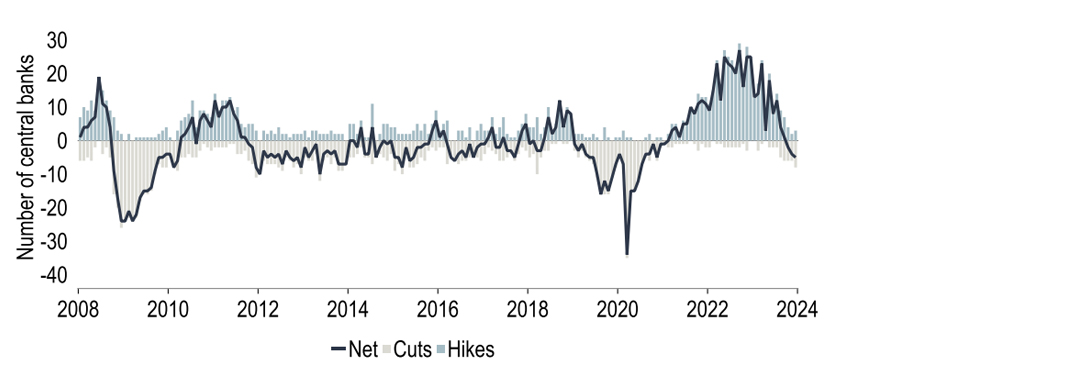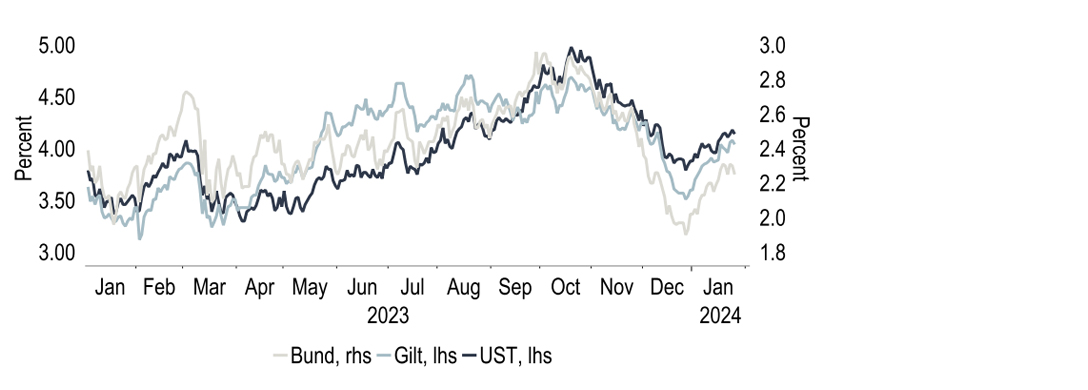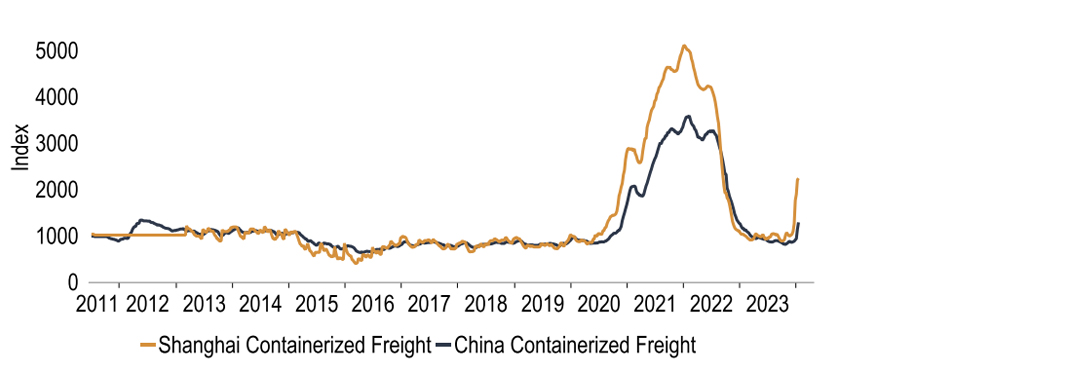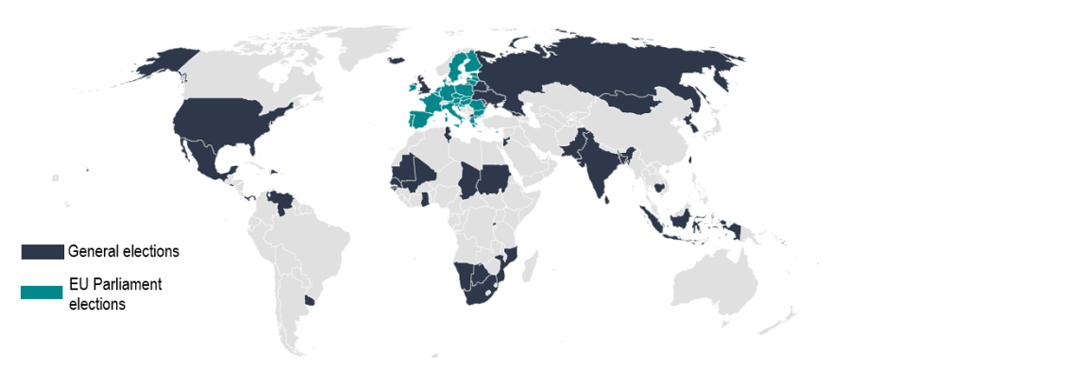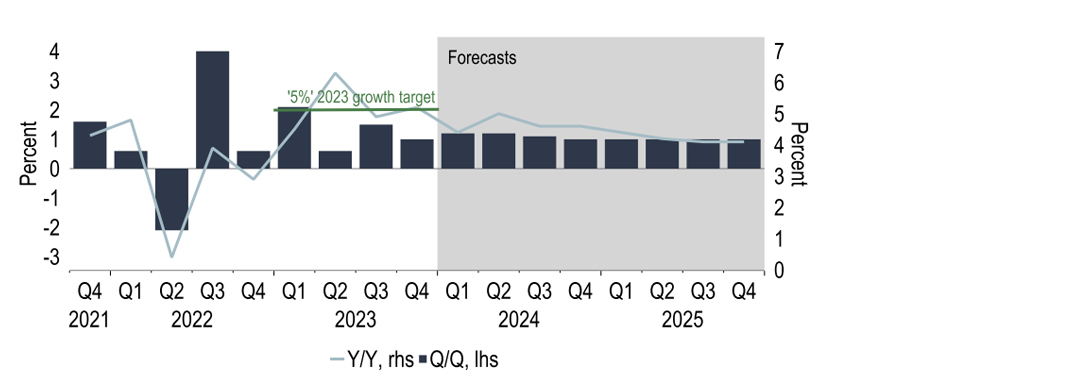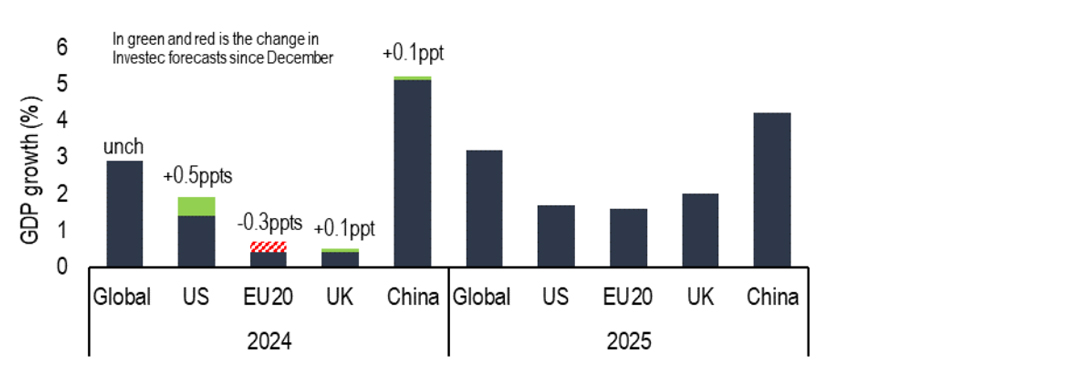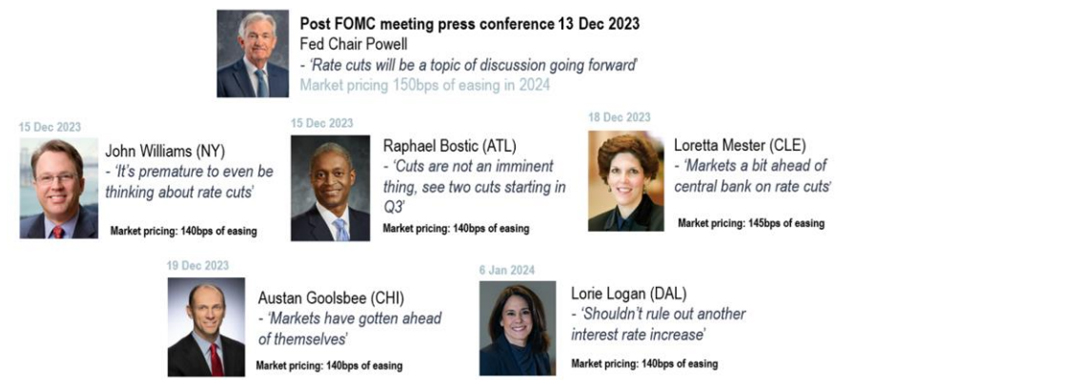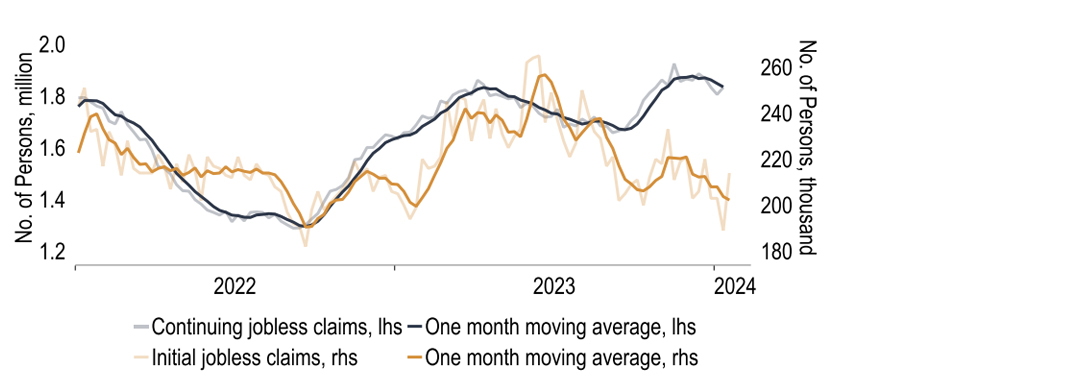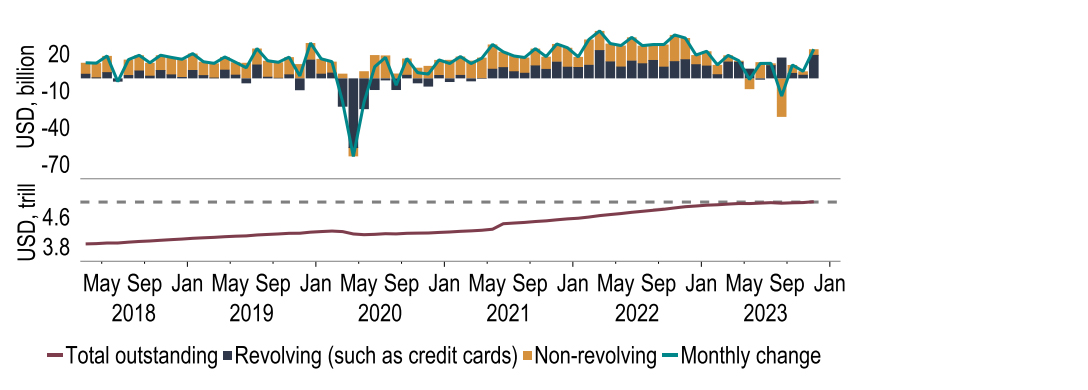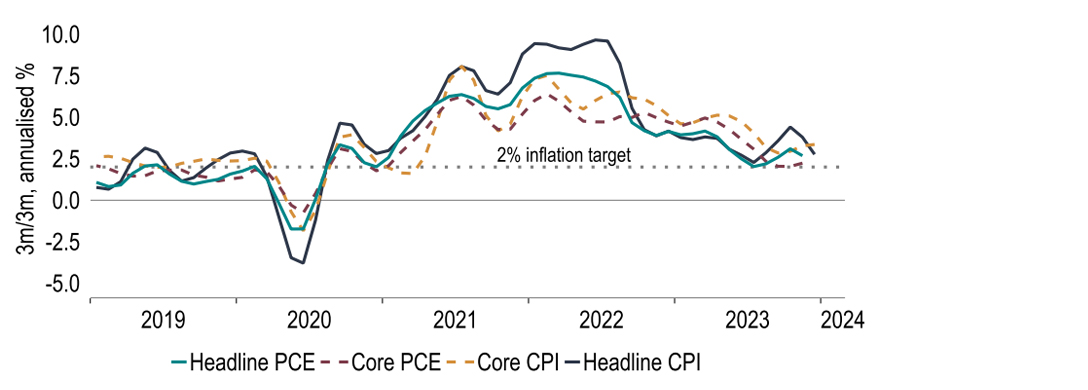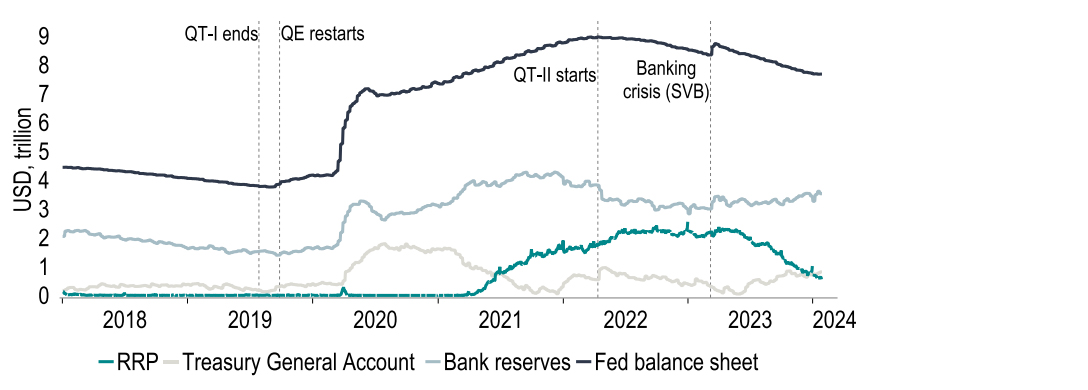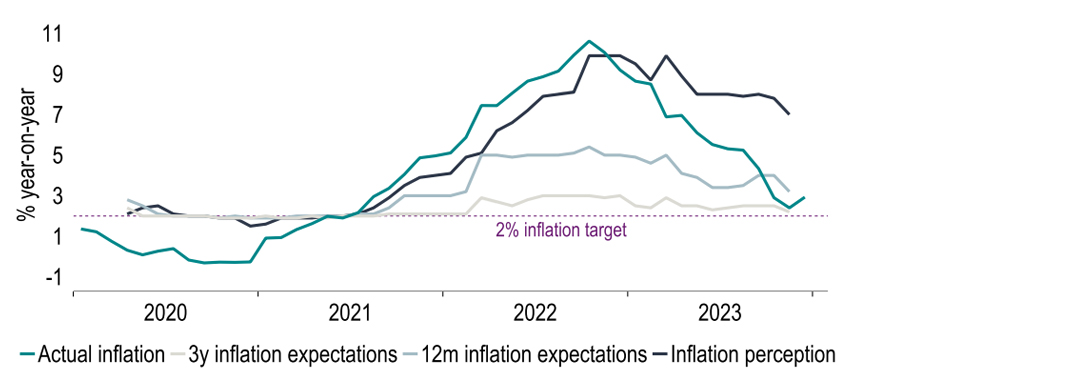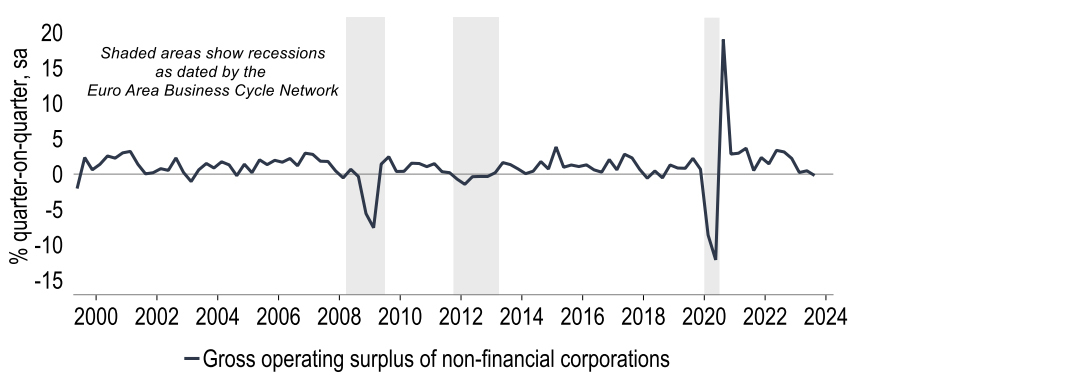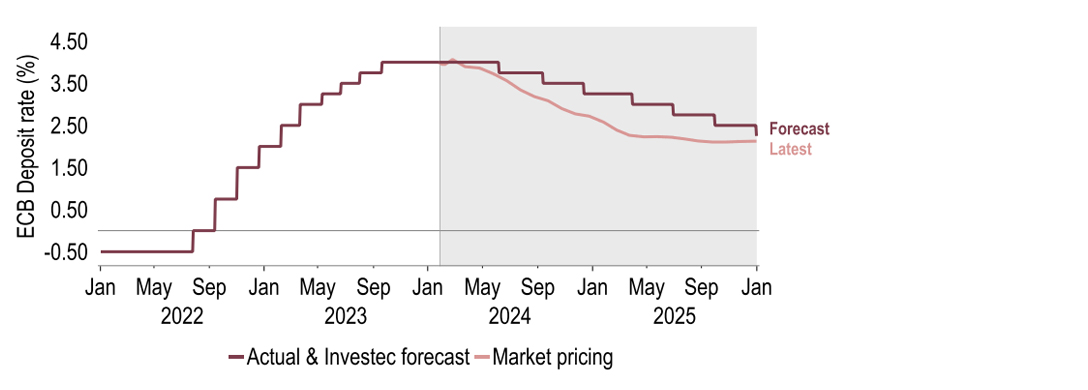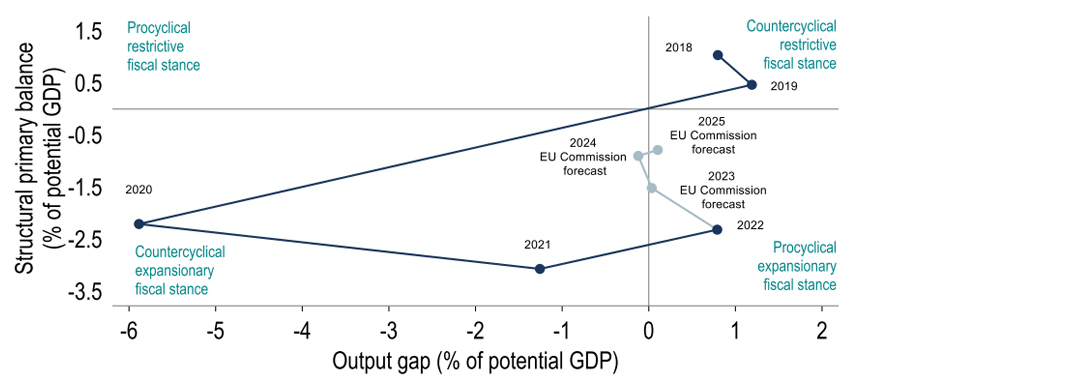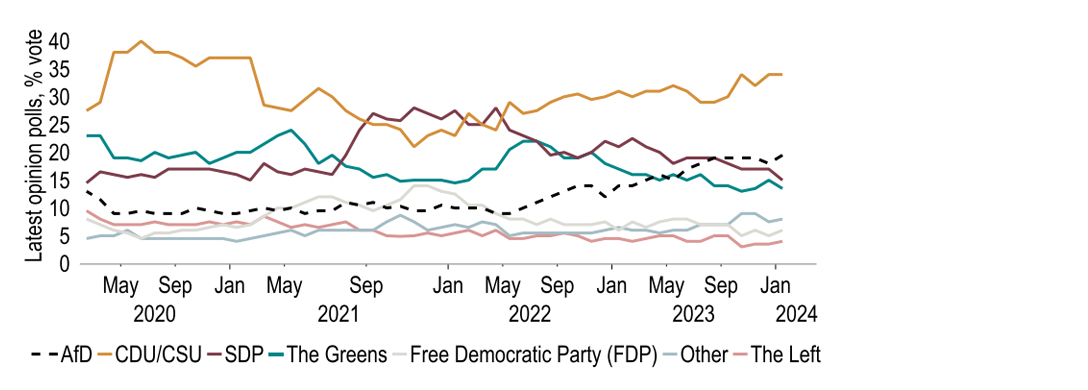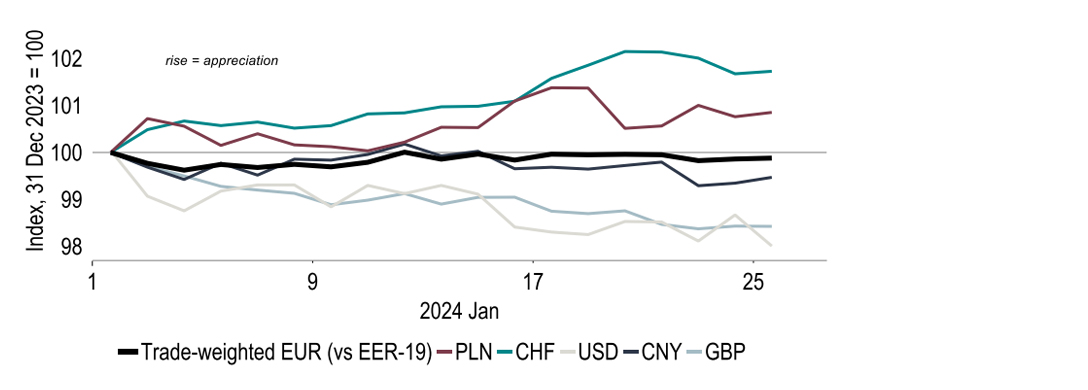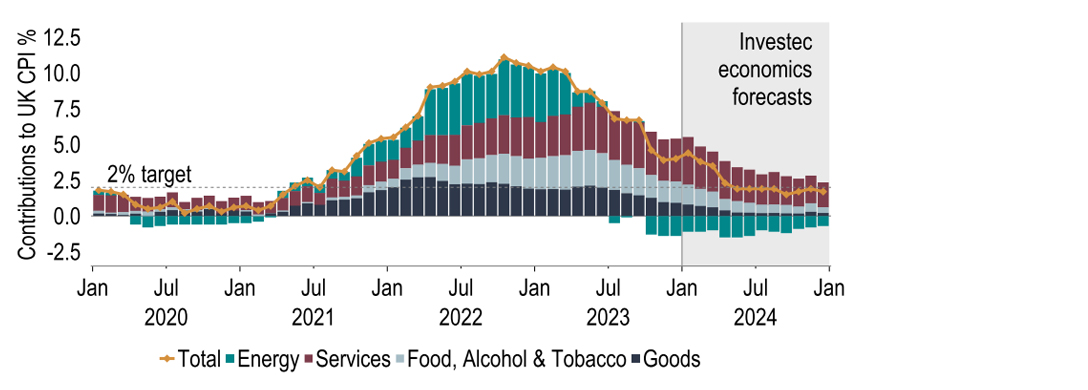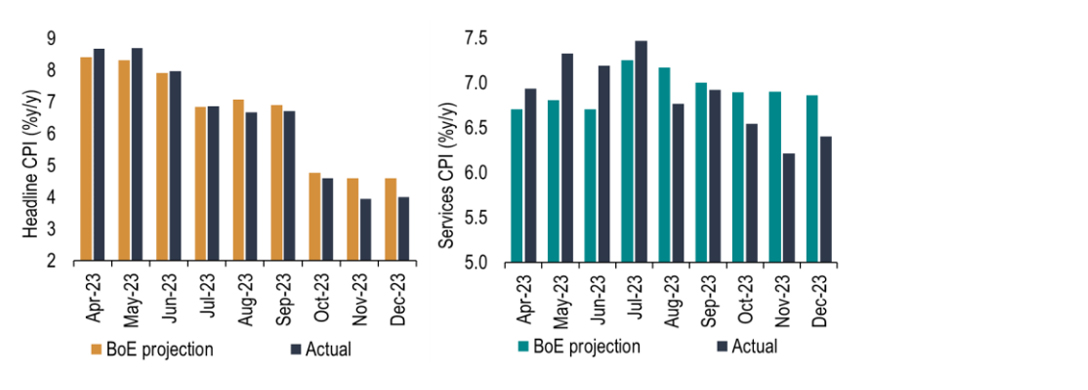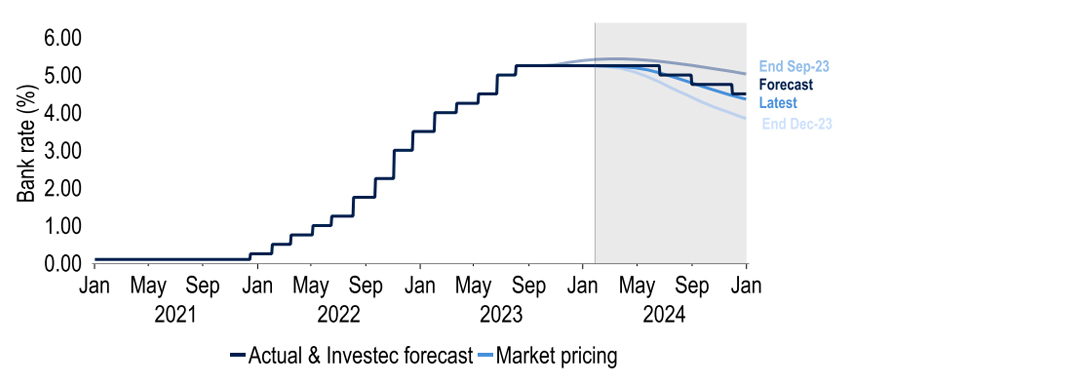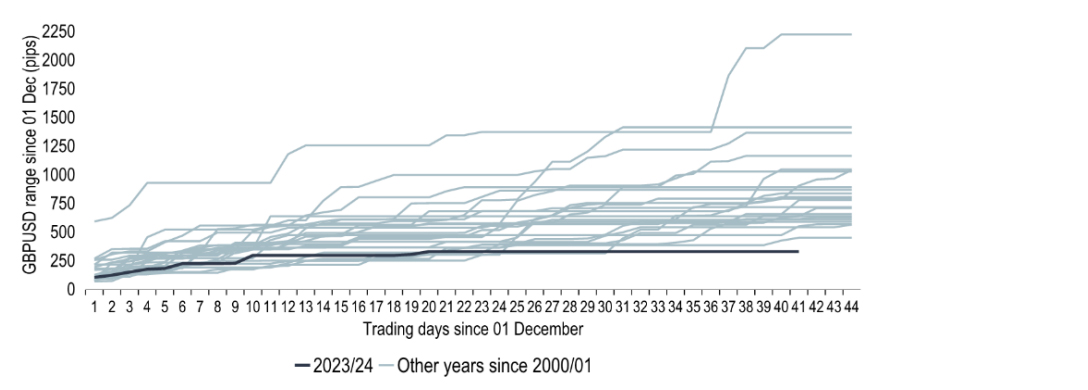Summary
Global
Interest rates are set to remain front and centre in 2024. However, in a departure from the last two years, now the question is not how far central banks will raise rates, but when and how far they will cut. We continue to believe that March/April cuts by the major central banks are less likely and that June will prove to be the month of action from the Fed, ECB and the BoE. Over a two-year horizon we are looking for 175-200bps of easing; this is not too dissimilar to market pricing. However, we diverge on the timing of cuts, believing central banks will be more cautious in easing policy this year than the market thinks but ramp up in 2025. Elections will also feature heavily this year with 48% of the world’s population voting in some form of legislative election. Additional geopolitical tensions and protectionist policies are possible, which would represent a downside risk to our 2.9% 2024 and 3.2% 2025 global growth forecasts.
United States
The US economy had a stellar performance in 2023, with output expanding by 2.5% on the year, despite one of the most aggressive monetary tightening cycles in recent history. However not all of that tightening has hit the real economy yet, whilst economic growth last year was supported by more expansionary fiscal policy; IMF projections suggest that fiscal policy is in contrast set to be a slight headwind to growth this year. As such we expect economic momentum to weaken slightly, pencilling in GDP growth of 1.9% and 1.7% this year and next. Under weaker growth, we expect the US dollar to lose some steam, with end-‘24 EURUSD at $1.14. But shifts in the greenback are also dependent on the outcome of the US election, on 5 November.
Eurozone
Whether or not the EU20 entered a recession in H2 ’23, momentum currently looks subdued, and the tightening in fiscal policy this year as energy support is phased out will act as a drag too. The better news is that inflation has eased faster than the ECB had expected and that the jobs market is still robust. Provided both factors remain in place, rising real incomes should lay the groundwork for faster growth later in ‘24 and into ‘25, reinforced in due course by rate cuts incentivising more investment. Our GDP growth forecasts are 0.6% and 1.6%, respectively. As regards ECB policy, we expect policy rate cuts to begin in June, proceeding more slowly this year (75bps) but faster in ‘25 (100bps) than priced in as inflation persistence fears are gradually dispelled.
United Kingdom
The MPC has overpredicted both headline and services CPI inflation for five straight months, a fact that is not altered by increases in December’s readings. This lowers the barrier to the MPC cutting rates at some stage, but the MPC’s assessment of the labour market is currently hamstrung by a paucity of reliable labour market data, in particular via the effective suspension of the Labour Force Survey. By Q2 we should see the ‘Transformed Labour Force Survey’ which would enhance the committee’s line of sight of whether conditions in the labour market are loosening sufficiently. Our baseline case is that members will judge there is sufficient progress on reducing inflation pressures more widely around the middle of the year and we still see the first cut in June. We judge that the MPC will proceed cautiously to start with and so see the Bank rate falling 75bps to 4.50% by end-year, against the 100bps currently priced into the yield curve. We concur with markets though that rates will end 2025 around 3.25%. Hence our disagreement with the curve is one of timing rather than substance.
For more information contact our economists
Please note: the content on this page is provided for information purposes only and should not be construed as an offer, or a solicitation of an offer, to buy or sell financial instruments. This content does not constitute a personal recommendation and is not investment advice.


